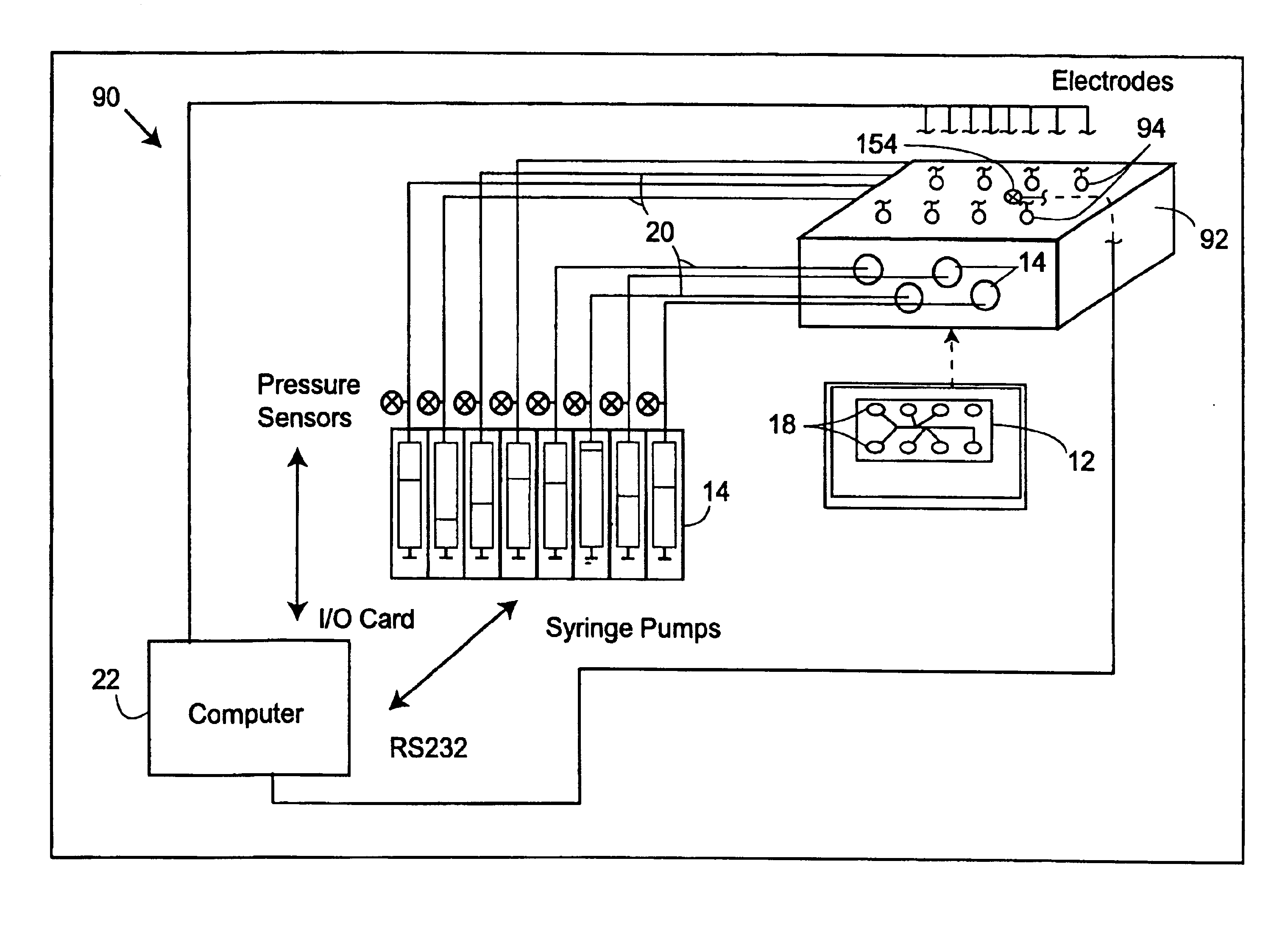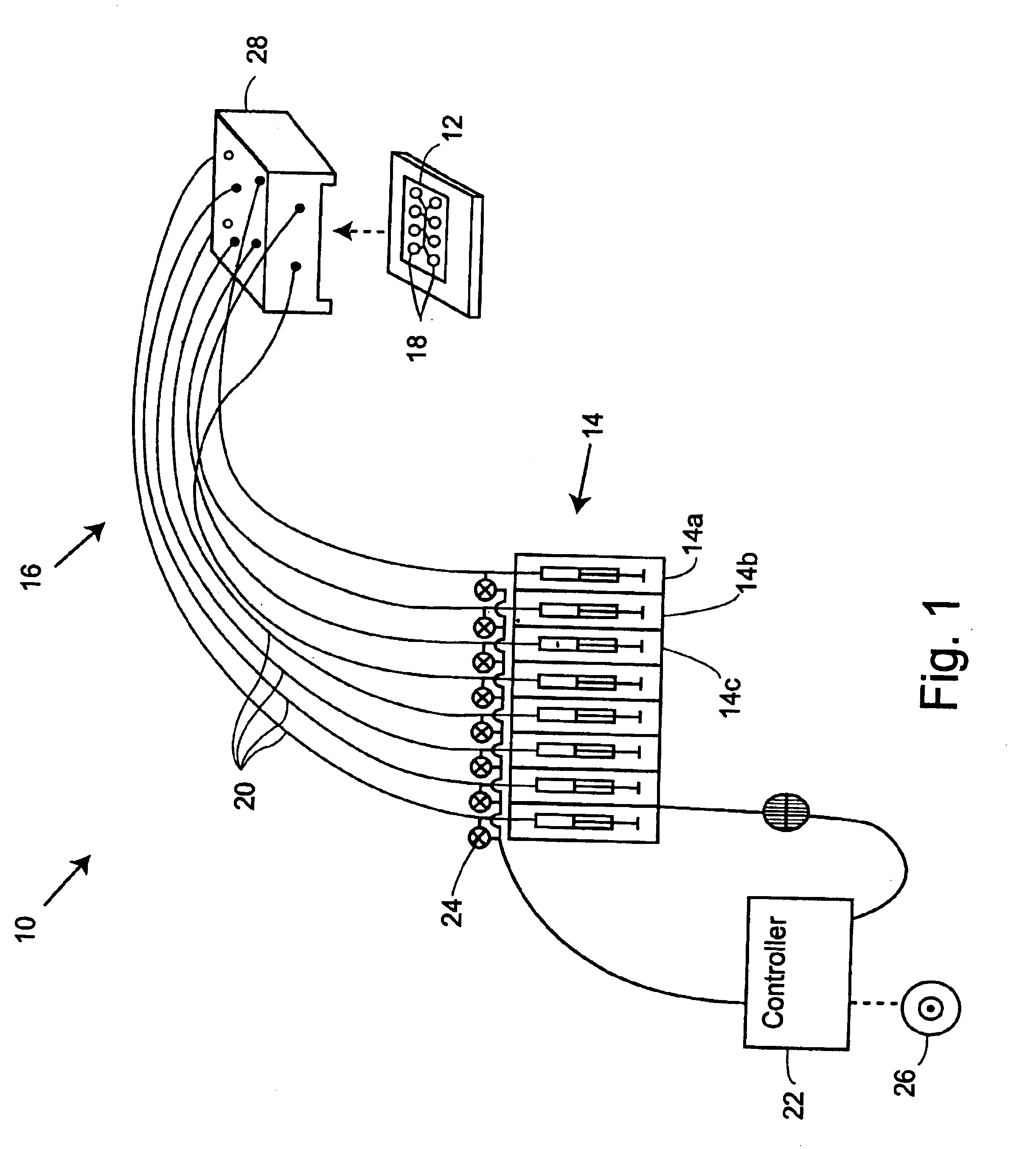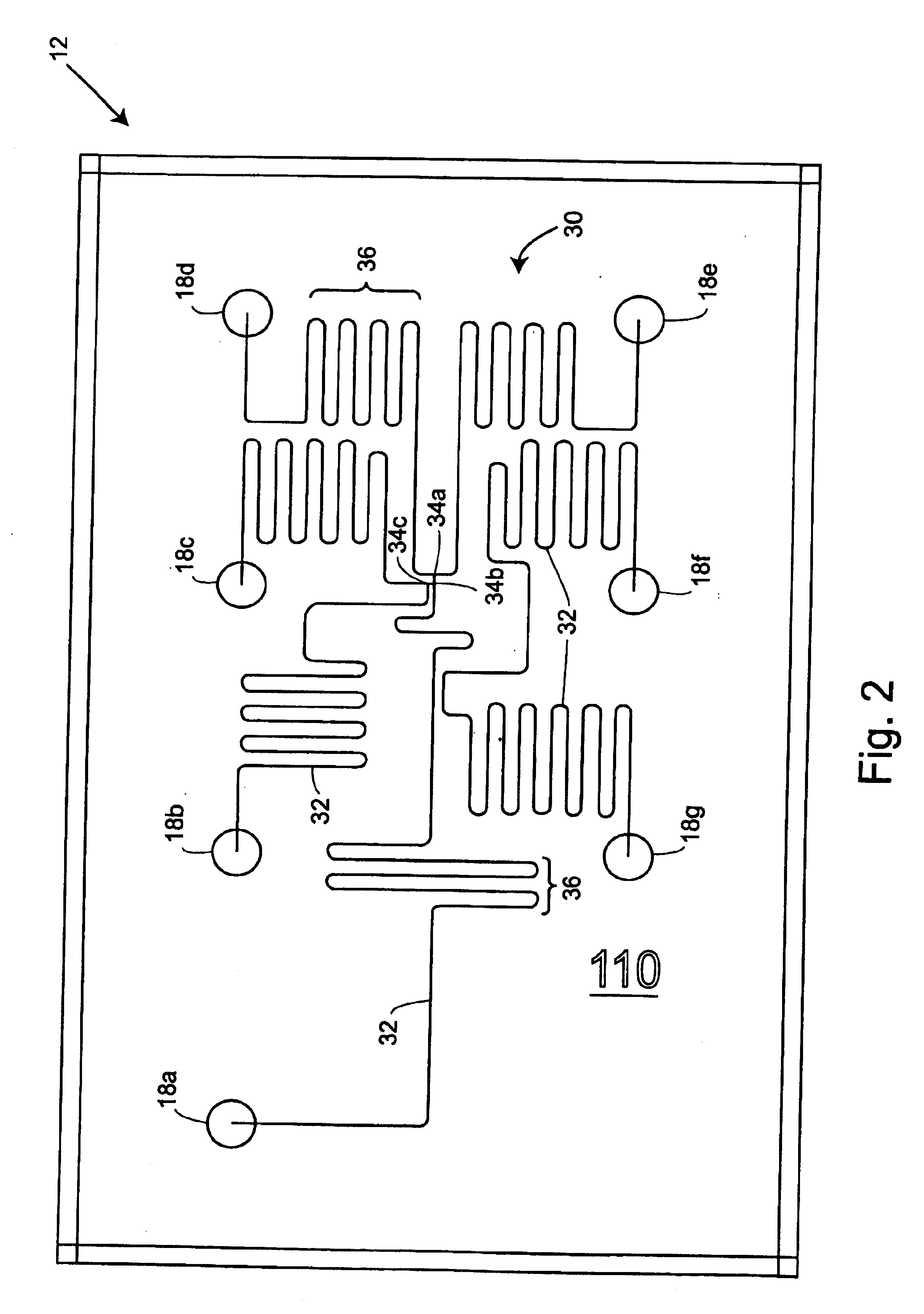Multi-reservoir pressure control system
a pressure control system and multi-reservoir technology, applied in flow control, diaphragms, electrolysis, etc., can solve the problems of more difficult quality control, inaccurate and repeatable specific flow accuracy, and inability to accurately apply electrical fields in some instances, so as to achieve accurate and reliable assays, the effect of sufficient oscillation
- Summary
- Abstract
- Description
- Claims
- Application Information
AI Technical Summary
Benefits of technology
Problems solved by technology
Method used
Image
Examples
Embodiment Construction
[0059]The present invention generally makes use of a multi-reservoir pressure controller coupled to a plurality of independently variable pressure modulators to effect movement of fluids within microfluidic networks. By selectively controlling and changing the pressure applied to the reservoirs of a microfluidic device, hydrodynamic flow at very low flow rates may be accurately controlled within intersecting microfluidic channels. Such pressure-induced flows can help to decrease (or entirely avoid) any detrimental effects of the electrical fields associated with electrokinetic transportation methods, such as sample bias, cell perforation, electroporation, and the like. Additionally, such pressure-induced microfluidic flows may, through proper chip design, reduce flow variabilities as compared to electrokinetic techniques through the use of pressure differentials (and / or channel resistances that are significantly greater than flow variations induced by secondary effects, such as infl...
PUM
| Property | Measurement | Unit |
|---|---|---|
| flow rates | aaaaa | aaaaa |
| flow rates | aaaaa | aaaaa |
| flow rates | aaaaa | aaaaa |
Abstract
Description
Claims
Application Information
 Login to View More
Login to View More - R&D
- Intellectual Property
- Life Sciences
- Materials
- Tech Scout
- Unparalleled Data Quality
- Higher Quality Content
- 60% Fewer Hallucinations
Browse by: Latest US Patents, China's latest patents, Technical Efficacy Thesaurus, Application Domain, Technology Topic, Popular Technical Reports.
© 2025 PatSnap. All rights reserved.Legal|Privacy policy|Modern Slavery Act Transparency Statement|Sitemap|About US| Contact US: help@patsnap.com



